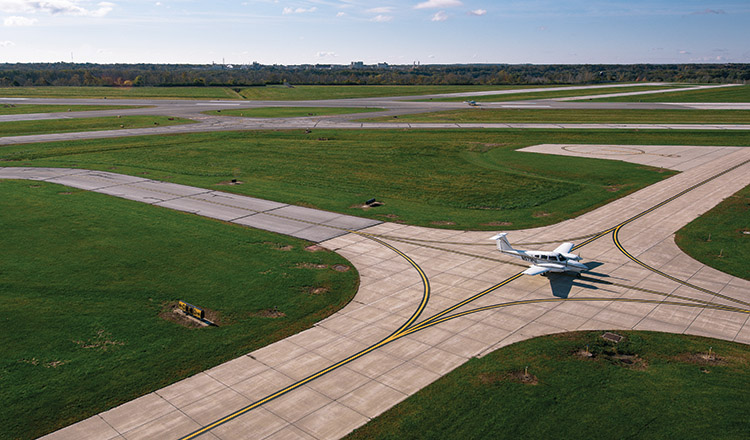A behind-the-scenes look at daily operations at the second-busiest airport in the state.
4:12 a.m.
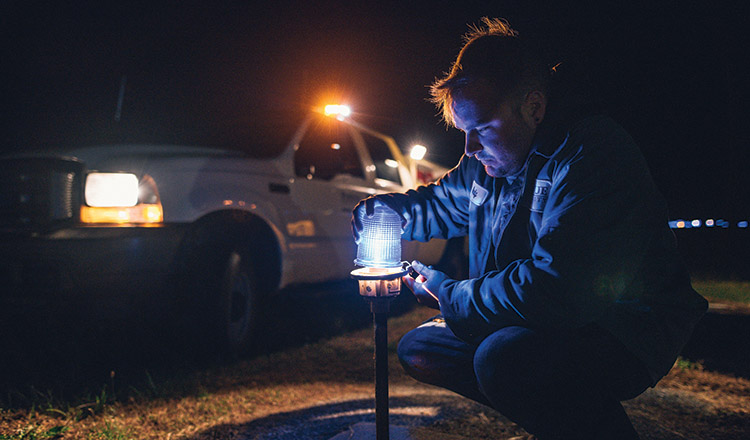
We meet Andrew Quirk, airport maintenance coordinator, at 4:00 a.m. on Monday, October 24, 2016, outside of the terminal building. His first order of business — to drive the runways and taxiways to check all of the lights. There are few other people around at this time of the morning, mostly drivers for Express Air Coach, a shuttle service between Lafayette and O’Hare airports. The tower won’t open for another three hours.
5:19 a.m.
Volunteers from Greater Lafayette Honor Flight begin setting up in the terminal to greet veterans and their guardians. The volunteer-run nonprofit organization offers complimentary one-day trips for approximately 80 veterans to visit the war memorials in Washington, DC. Part of the national Honor Flight network, this was the 15th Honor Flight organized by the Greater Lafayette group.
6:37 a.m.
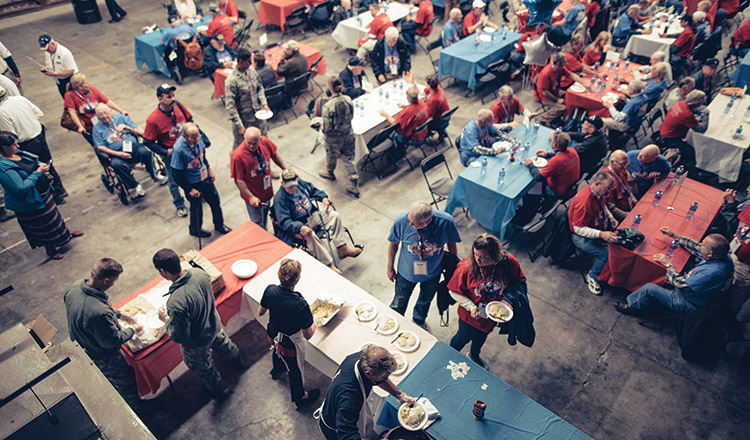
The veterans and guardians are served breakfast in Hangar Two by Purdue Air Force ROTC seniors Devan Tisdale of Spring Lake, North Carolina, and Nathan Sax of West Lafayette, Indiana — both self-described military brats. Members of the “All-American” Marching Band play a number of military marches for the crowd, the big brass sound echoing in the cavernous hangar.
7:40 a.m.
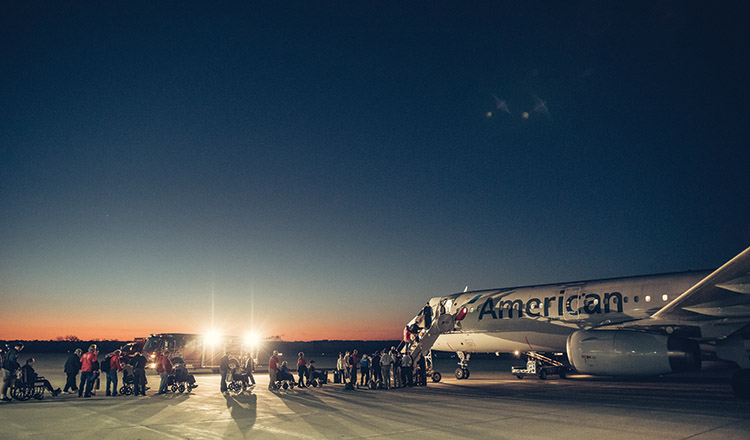
Honor Flight passengers board the American Airlines Airbus 321 that will carry them to Washington, DC. Fifteen of the 85 veterans scheduled for this flight were in their 90s.
10:17 a.m.
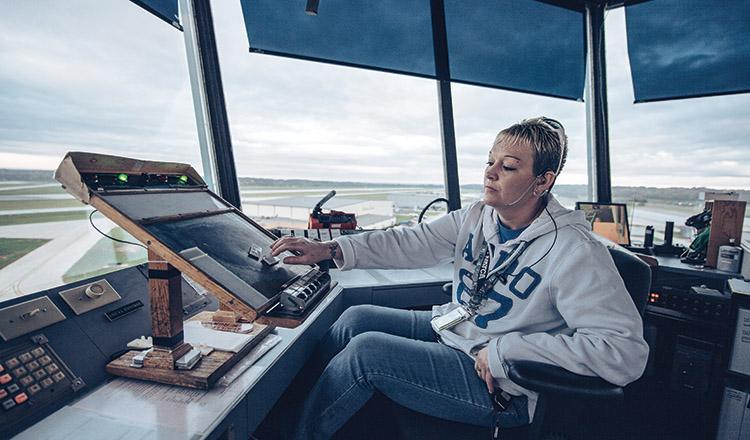
The Lafayette tower is open 7:00 a.m. to 9:00 p.m. daily. A crew of eight to 10 rotate on eight-hour shifts. Two controllers work the 180-square-foot tower at a time, one to manage takeoffs and landings (local control) and another to monitor weather conditions and ground traffic patterns (ground control). Although the operational staff is much smaller than what you’d find at a larger commercial airport, the pace is much quicker. At peak times, a Lafayette air traffic controller can monitor one operation every 30 seconds.
10:45 a.m.
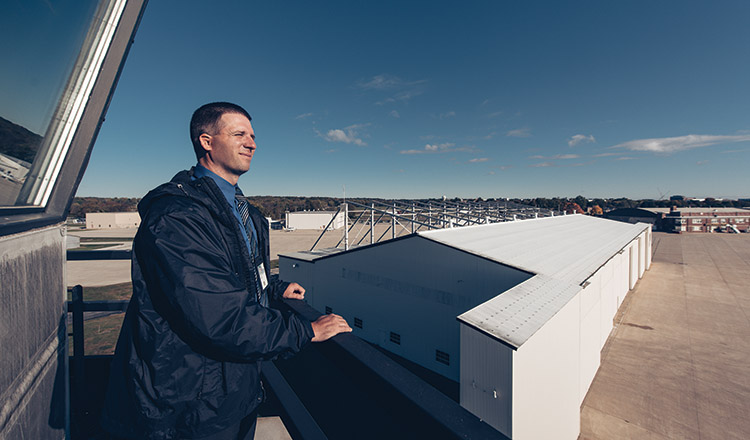
Brian Inniger (T’04) began working for the Federal Aviation Administration in 2008. His first job with the FAA was at the Lafayette tower as an air traffic controller. He worked for a time at the Indianapolis airport before returning to Purdue as the airport’s air traffic manager in November 2015. “I have arguably the best job in the world right now, in the place that feels like home,” says Inniger. “All the Purdue astronauts who flew here … and all these students who are training now, they will go on to have distinguished careers in flight. It’s neat to know that you’ve had a hand in that.”
11:35 a.m.
Student pilots account for the vast majority of the traffic at the airport. On this particular day, the Lafayette air traffic control tower oversaw 603 operations. Of those, 414 were touch-and-go operations, a maneuver where pilots practice landing followed by taking off without stopping on the runway. These aircraft remain in the traffic pattern at the airport.
1:59 p.m.
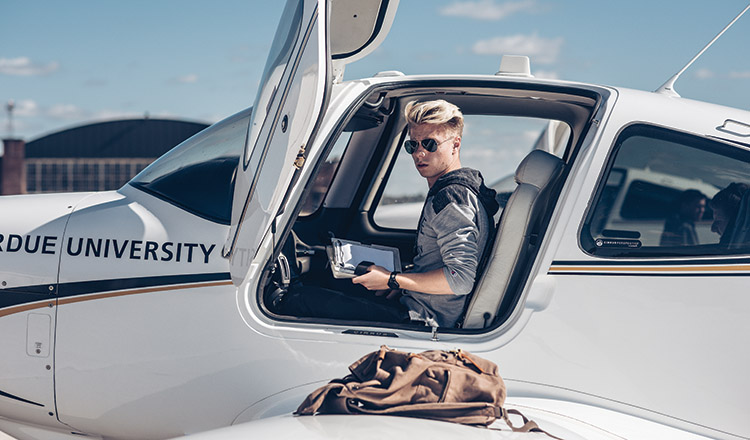
Aleksi Goulet, a professional flight major, completes his preflight check on a Cirrus SR20. The School of Aviation and Transportation Technology has 16 of these planes in its fleet. The private pilot course is 50 hours, and students are scheduled for three two-hour flight slots every week.
2:47 p.m.
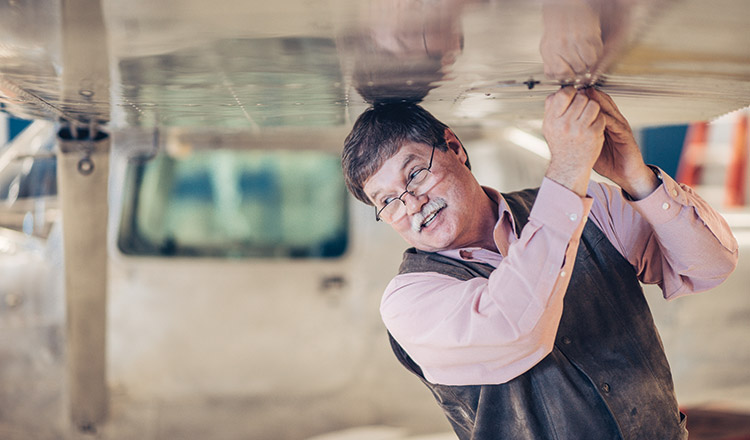
J. Mark Thom, associate professor of aviation technology, preps a Cessna 152 during a class on fixed- and rotary-wing aircraft rigging. Hangar One in the Niswonger Aviation Technology Building is full of light aircraft designated for ground instruction of aircraft operations. “The aircraft all function, and the systems work, which requires the same level of safety and adherence to detail required for a flying aircraft,” says Thom. “Students learn in a highly hands-on environment around live functioning systems.”
3:36 p.m.
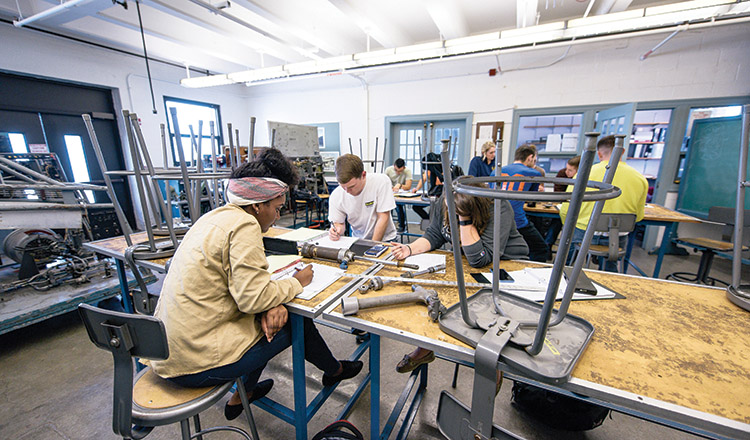
Aviation technology students study advanced aircraft systems, including fuel, environmental (air-conditioning, pressurization, and oxygen), fluid power, flight control, fire protection, ice control, warning, and auxiliary power.
6:08 p.m.
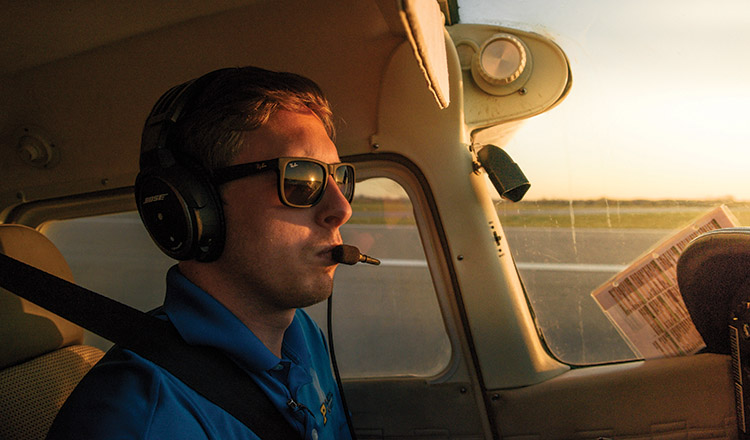
We board a Cessna 172 single-engine aircraft with pilot Colin Vieke of Purdue Aviation for a bird’s-eye view of the airport. Vieke, a senior in professional flight technology, earned his pilot’s license at age 18, the same day he moved in at Purdue.
6:36 p.m.
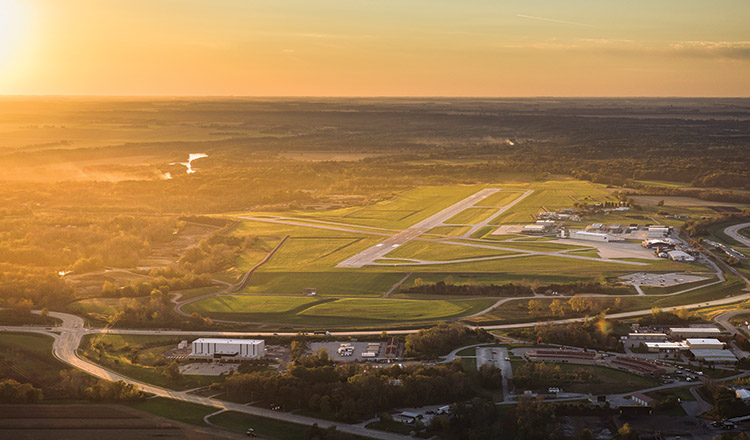
The airport encompasses 537 acres and two runways. Runway 10/28 is an east-west runway that is 6,600 feet long x 150 feet wide. It has three instrument approaches, which allow aircraft to land in most weather conditions. Runway 5/23 is 4,225 feet long x 100 feet wide and can accommodate the majority of aircraft operations at LAF: single-engine propeller-driven aircraft.
7:54 p.m.
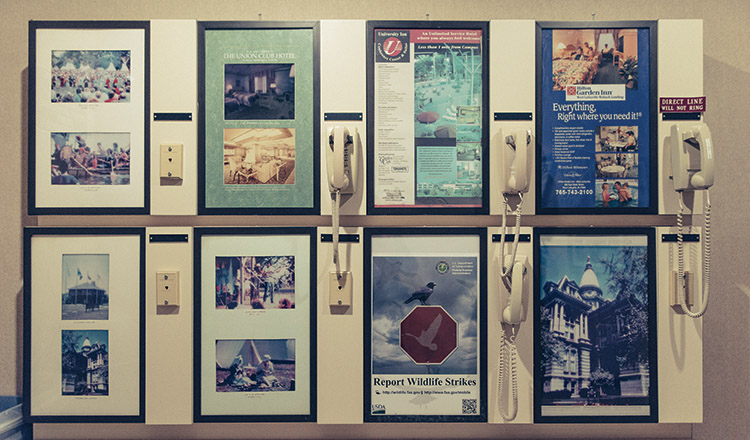
The Terminal Building is eerily quiet. Although commercial airline operations ceased at the airport in 2004, remnants of its commuter past are still visible throughout the terminal. When we pick up the phone for the Union Club Hotel, it dials up the front desk across campus.
8:18 p.m.
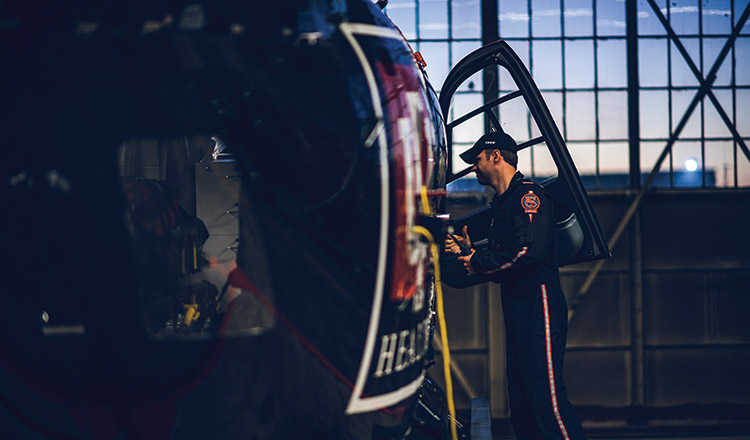
The IU Health LifeLine air ambulance crew is on standby 24/7 to provide critical-care transport at a moment’s notice. The twin-engine medical helicopter, piloted by Metro Aviation, undergoes a rigorous maintenance and inspection schedule, with a full preflight check at every pilot shift change. It can travel 45 nautical miles (52 miles) in 23 minutes. The crew quarters, on the first floor of the Terminal Building, include a communal living room, full kitchen, and six bedrooms.
10:04 p.m.
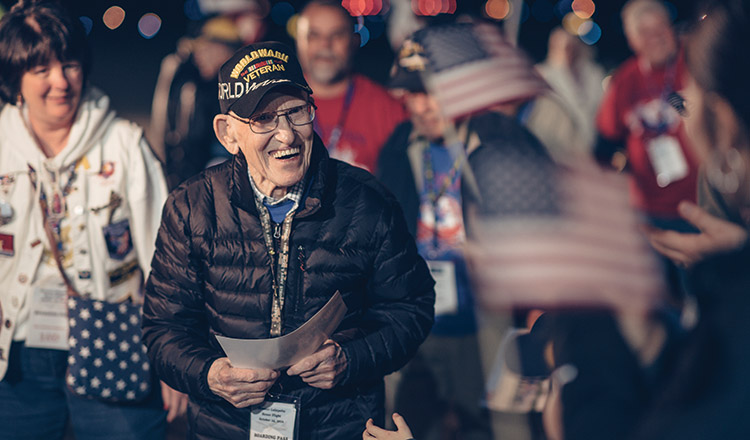
The Honor Flight returns to the Purdue Airport after spending the day in Washington, DC. Around 200 people turned up in the chilly fall weather to welcome home the 85 veterans and their guardians. William Harshman, a 92-year-old World War II veteran, was among the first to disembark and see the cheering crowd. His trip was sponsored by a northern Indiana family whose father passed away before he was able to make the journey.

